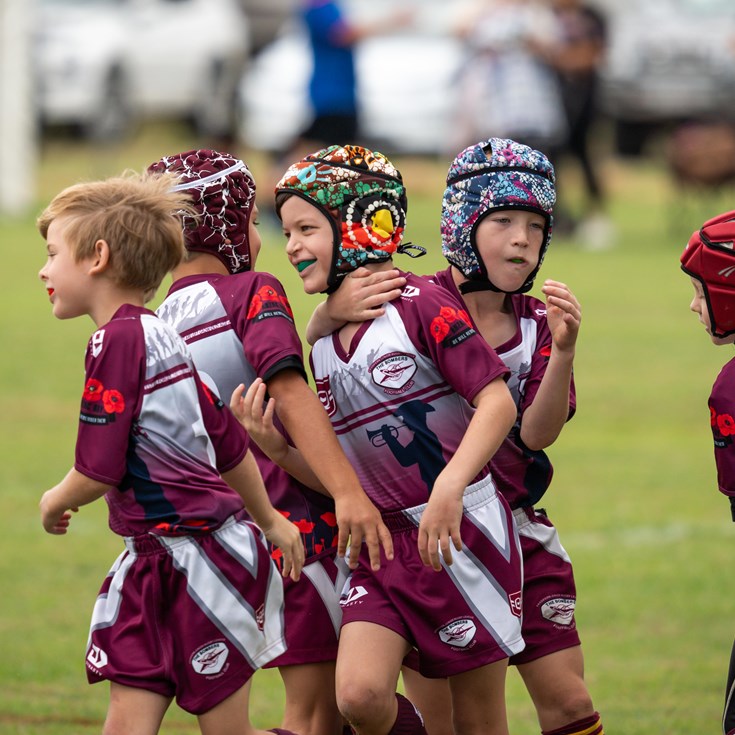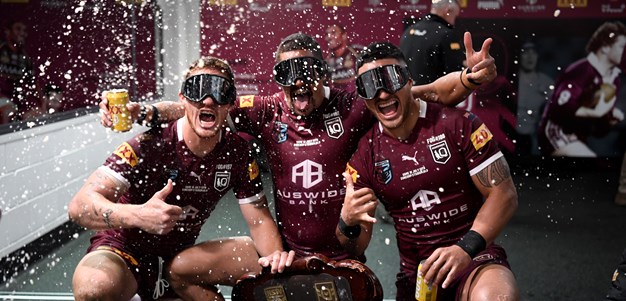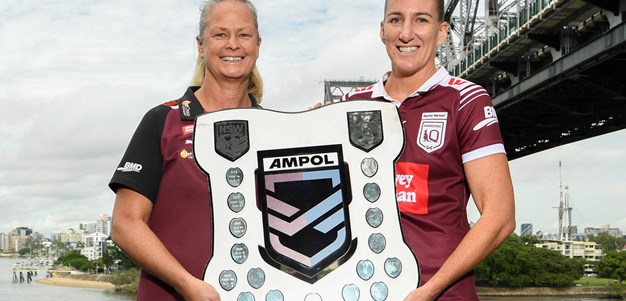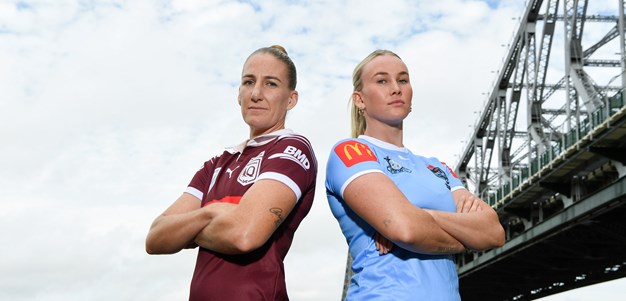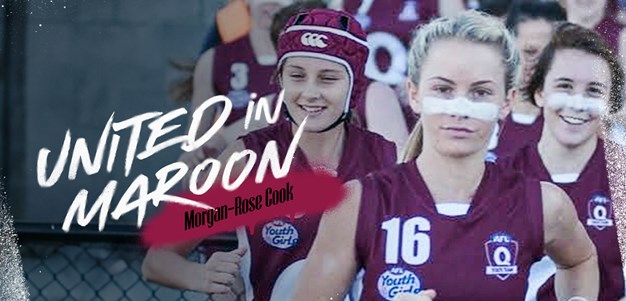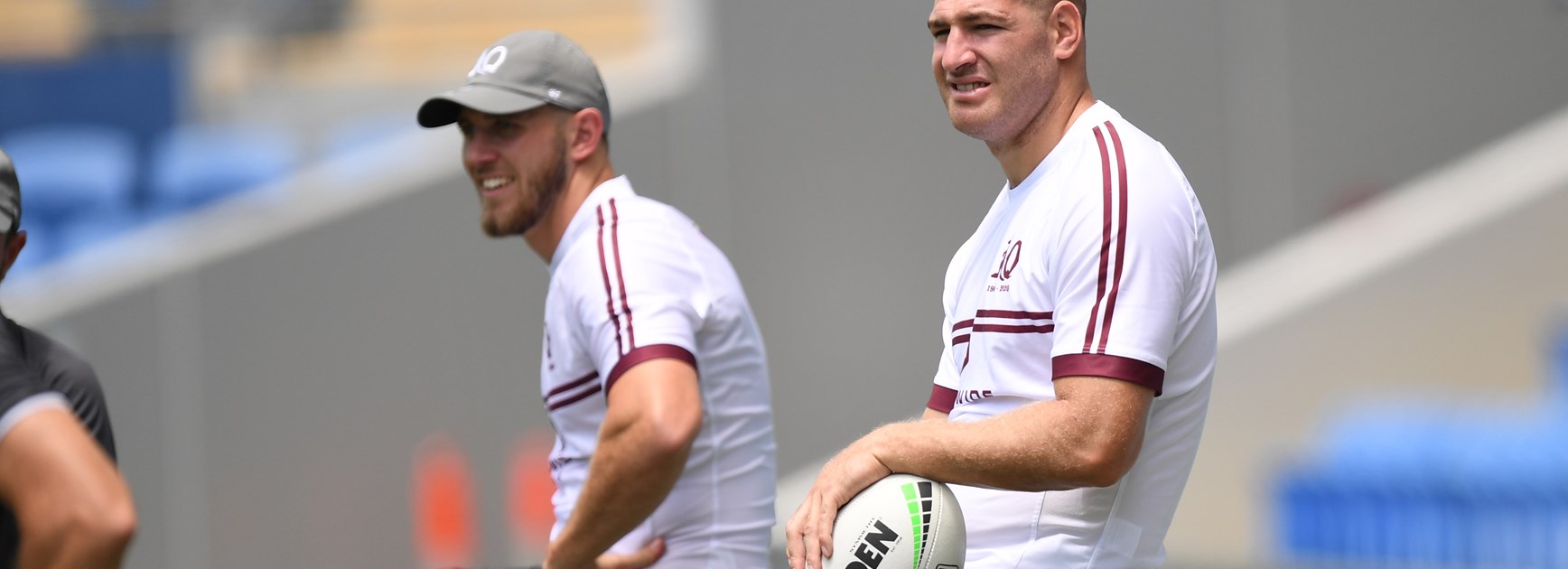
The Queensland Maroons pulled off one of the biggest State of Origin upsets ever nearly three weeks ago now and the excitement continues to run through most Queenslanders.
The hard work that went into the win did not just happen during the three games. For one month the 27-man squad, due to the protocols put in place because of COVID-19, lived together on the Gold Coast in a bubble.
The strict protocols also meant the squad travelled to and from games on game days, putting a huge emphasis on adequate preparation and recovery, including using Bauerfeind compression to make the three back-to-back weeks a success.
To put that into perspective, the schedule for Adelaide was a 23-hour one.
The day started with breakfast from 5.30am, with the bus departing from the Gold Coast to Brisbane Airport at 7.30am. There was the 2.5-hour charter flight to Adelaide, a bus trip to a hotel for players to have some food and rest prior to getting the bus to Adelaide Oval to prepare and warm-up for Game I. After the game, there was the bus trip from Adelaide Oval to the airport, the 2.5-hour flight to Brisbane, followed by the 1.5-hour bus trip back to the Gold Coast, with the team getting home at 4.30am Thursday.
The squad was joined by a contingent of staff, led by coach Wayne Bennett and assistant coaches Mal Meninga and Neil Henry, responsible for ensuring they were in peak condition to perform. Despite the various obstacles including travel.
Some of the other hands on deck were QRL male pathways and performance manager Joe McDermott, head of performance Alex Corvo, wellbeing, strength and conditioning coach Chris Gaviglio, head trainer Matt Barradeen and trainer Allan Langer; there was also doctor Matt Hislop, physiotherapists Rob Godbolt and Meirion Jones and massage therapist James Green.
The three back-to-back weeks at the end of the NRL season tested the limits of the players and the ability of staff to manage the players.
Maroons physio talks about the importance of recovery
Corvo said preparation began pre-bubble, to ensure the players were in the best condition possible with the different format and timing of the series.
"When the players finished their NRL seasons, we were told by the RLPA they had a two-week period where they weren't to do any official training... once that two weeks lapsed, the players that were able to were going into training squad sessions in Brisbane and on the Gold Coast, Townsville, Sydney and Newcastle," Corvo said.
Corvo said assistance from Paul Bowman, Steve Hooper, Balin Cuples, as well as Steve Price and Paul Arraj, made the pre-bubble preparation possible.
"I was very fortunate I had good help from people in those areas," Corvo said.
"Otherwise we were looking at flying players to Brisbane every week. But we wanted to keep them at home and happy before coming into camp."
Corvo admitted it was a concern prior to Origin "that a lot of our players hadn't played a lot of footy in recent times", but the staff turned that into a positive.
"The fact that they hadn't played enabled them to regenerate, recover, have a bit of a break... but at the same time we needed to make sure that when they came into camp, they could hit the ground running," Corvo said.
"I think all of the boys did that really well, which is a credit to them."
Preparation and recovery once in the bubble included skills sessions, conditioning sessions, gym sessions, cryotherapy, ice baths, sauna, stretching sessions, pool and beach recovery, physiotherapy, massage, the use of massage guns and Bauerfeind's medical grade compression garments, adequate down time and good nutrition.
Corvo said the workload for players going into Game I was higher than usual, but it worked well for the series.
"There were certain things the coaches - Wayne and Neil and Mal - needed to get through before Game I... the sessions, particularly in the first week, were very solid, tough skill-based sessions," Corvo said.
"So we were still getting conditioning in, which was great, at the same time as the rugby league side of what they needed to know.
"We had a very large volume leading into Game I... fortunately the players recovered pretty well leading into that first game. Towards the end of that first week they were all pretty sore and tired, but in hindsight, I think that actually helped us, not only in Game I, but more so in Game III. We built up a bit of a base with really solid work, which would could call on later in the series."
Corvo said recovery played a vital role in keeping the “united and positive” group primed during the series.
"The thing with recovery is it's different for every individual. For example, Josh Papalii hates ice baths but he does other forms of recovery... at Origin level you can work in with what their preferences are," Corvo said.
"The players have got their own individual routines now. From where we were 10 or 15 years ago, even five years ago, players are a lot more versed and educated in that area.
"The amount of work we did early in the camp indirectly allowed us to recover better because we built up a resilience to hard work early on. The training load going into Game II and III was a lot less than Game I. We could afford for it to be because of what players did in that area early on."
Gaviglio, who was responsible for strength and conditioning, but also responsible for running and reporting on all of the GPS and running loads during training and games, agreed preparation and recovery played an "extremely important role", as it did every year.
Gaviglio said the differences this year included having players who had already entered their "off-season", players who played in the grand final and more extensive travel.
"I think there's always a huge demand for recovery," Gaviglio said.
"The difference in the setup this year... previously we'd have players coming off a game into the preparation, so recovery is still important in that scenario. But the challenges that we had, which were slightly different, were because we had 3.5 weeks but also the season had finished so we had players coming off a small off-season break.
"They'd finished their season, off-season break and they had to then ramp up their training leading in to the camp, into the games. So there was this increase in volume that they hadn't been used to as opposed to basically coming straight off an NRL game. And we also had the players who made the finals series and they'd been tapering as well leading into the grand final.
"So coming to Origin, because you've got new team dynamics, a new coach.... they probably did a little bit more running than they traditionally would if the team had been playing together for a few years. So that's where recovery obviously becomes really important because of the slightly higher training loads, running loads and time on feet."
Gaviglio said recovery was "a multi-tool modality" and travel was a “huge consideration” when it came to the planned recovery.
"Different athletes respond to different kinds of recovery modalities. Obviously massage - the vibration guns are quite a useful tool, especially when you've got big, strong players with lots of tissue. How do you keep that tissue nice and subtle so it they can perform?” Gaviglio said.
“And obviously compression plays a large part in recovery. The players do like it. The good thing about having Bauerfeind on board this year was the higher quality of compression grade, which is really important, because there are a lot of products out there that don't have the medical grade compression they really should. It really delivers the essential level of compression for the appropriate level of recovery, especially in these guys. They're big, they're highly muscular athletes and they have a lot of time of their feet so there's high loads going through their body, therefore elements like compression play a huge part in recovery.
“When it comes to travel… on a long day, you have a long time on your feet, and people don't realise how long you spend on your feet and that has an actual energy cost on the body. What can we do to help mitigate fatigue?
“When you're sitting down for long periods of time, that's quite an important consideration... it is a lot of time sitting. If players can't move around during that time, having the compression garments to assist them so there's not a lot of blood pooling in their extremities, is really important.”
Gaviglio added given the strict protocols in place, the format of the series and the travel required, the Maroons did quite well injury-wise.
“I think the big key was, with respect to injuries, was about the squad picked. We didn't have the luxury of being able to, if someone got injured, drop them out. So it was really important to firstly select players who were less of an injury risk or uninjured. I think having a healthy squad to start with made a huge difference,” Gaviglio said.
“Once in camp, ensuring that if any injuries did rear their heads, we were able to try and settle it as quickly as possible. And that's obviously where our recovery modalities - including having good quality physiotherapists and masseuses on hand helped.”

